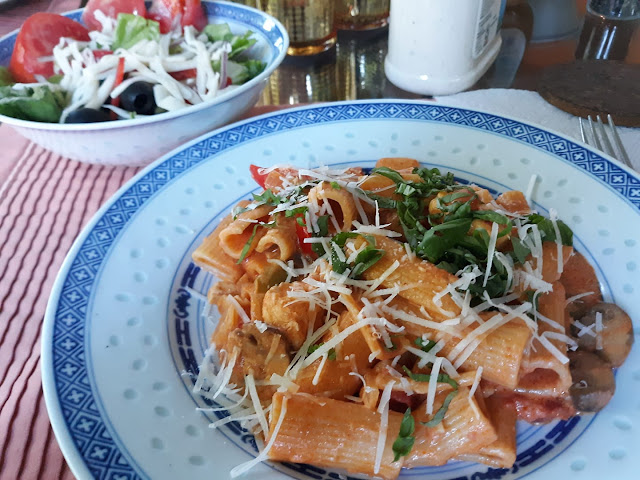 |
| A few of my own personal Polish and Ukrainian Easter Eggs. |
I miss the traditions associated
with the Polish Easters from my childhood in Michigan—everyone wearing the ashes of Ash Wednesday, the
fasting of Lent, the washing of feet on Maundy Thursday, the Stations of the
Cross at noon on Good Friday, the blessing of the Easter Basket on Holy
Saturday, and, of course, the beauty and solemnity of Easter Sunday with masses
of fragrant Easter lilies surrounding the altar, brilliant white candles
ablaze, and the smell of incense in the air. Even Easter lilies don't smell like they used to--they are very pretty, but not very fragrant.
I love Polish and other Slavic Easter eggs decorated in vibrant colors. The Polish word for decorated eggs is pisanki. I once tried creating them myself, but a tragic accident involving a broken bookshelf destroyed every one of my eggs. Since then, I began to collect eggs rather than create them. Some of my collection is visible here on my page. I found an outstanding website, Pisanki – the decorated Easter eggs in Poland, that goes into much detail on the history of Polish Easter Eggs. There are also examples of eggs from different regions of Poland.
I love Polish and other Slavic Easter eggs decorated in vibrant colors. The Polish word for decorated eggs is pisanki. I once tried creating them myself, but a tragic accident involving a broken bookshelf destroyed every one of my eggs. Since then, I began to collect eggs rather than create them. Some of my collection is visible here on my page. I found an outstanding website, Pisanki – the decorated Easter eggs in Poland, that goes into much detail on the history of Polish Easter Eggs. There are also examples of eggs from different regions of Poland.
 |
| New Pysanky from the Ukraine, 2019. |
If you are looking for a recipe for our traditional Polish Easter soup, you can find it on my website here.
I found an idea for serving Polish Easter soup in rye bread "bowls". I thought it was a very creative idea. Click here to go to the website.
Dessert was usually a white cake covered in coconut in the shape of a Pascal lamb often made by my Aunt Hattie.
I often make a Easter Egg Nest Cake---it's a yellow cake accented with orange zest, and frosted with Sander's Buttercream Icing.
A few weeks ago, I made a different cake that I thought
would be a great cake for Easter because of its colors of purple-blue and
vibrant yellow. The flavors of lemon and blueberry also make for a nice finale
for an Easter Brunch.
I found the recipe at Delish.com and made no changes to the recipe. It was delicious!
I found the recipe at Delish.com and made no changes to the recipe. It was delicious!
Lemon Blueberry Cake
1 18-oz. box vanilla cake, plus ingredients called for on
box
Juice and zest of 1 1/2 lemons, divided, plus more zest for
garnish
1 3/4 c. fresh blueberries, divided
3 tbsp. all-purpose flour
1 c. (2 sticks) butter, softened
3 c. powdered sugar
1/4 c. heavy cream
1 tsp. pure vanilla extract
pinch of kosher salt
2 thin lemon slices, for topping
DIRECTIONS
Preheat oven to 350º and grease three 9" cake pans with
cooking spray. Line with parchment. Prepare cake mix according to package
directions, then stir in juice and zest of 1 lemon.
In a small bowl, toss 1 cup blueberries and flour until
completely coated (to keep the berries from sinking). Gently fold blueberries
into the batter.
Divide cake batter evenly among prepared cake pans and bake
until a toothpick comes out clean, 18 to 20 minutes.
Let cool in pans for 10 minutes, then invert onto a wire
rack and let cool completely.
 |
| Showing the beautiful layers of lemon buttercream and blueberries. |
Place a dab of frosting on cake plate (to keep cake in
place) and place parchment strips on each side of the cake plate. Place down
first cake and top with frosting, then top with second cake and frost.
Repeat with third cake and frost sides.
Garnish with remaining blueberries, lemon slices, and zest
and serve.
I found the recipe here: Delish


